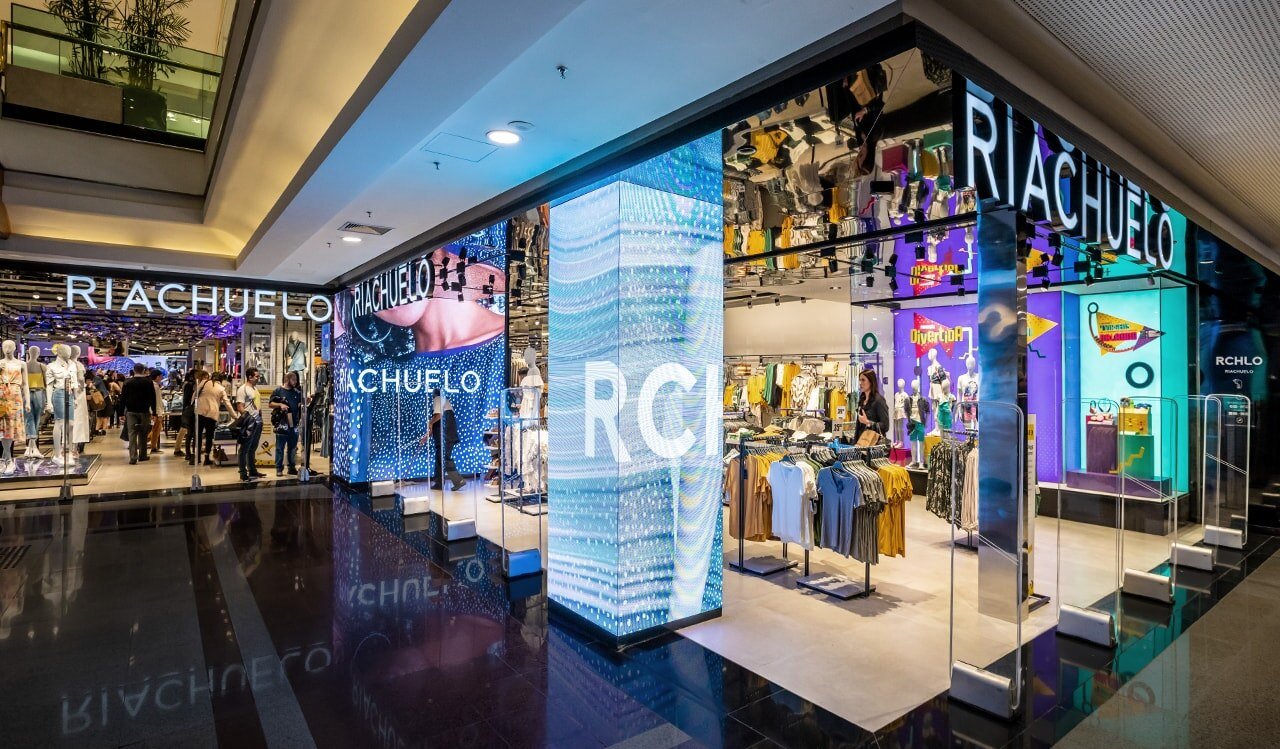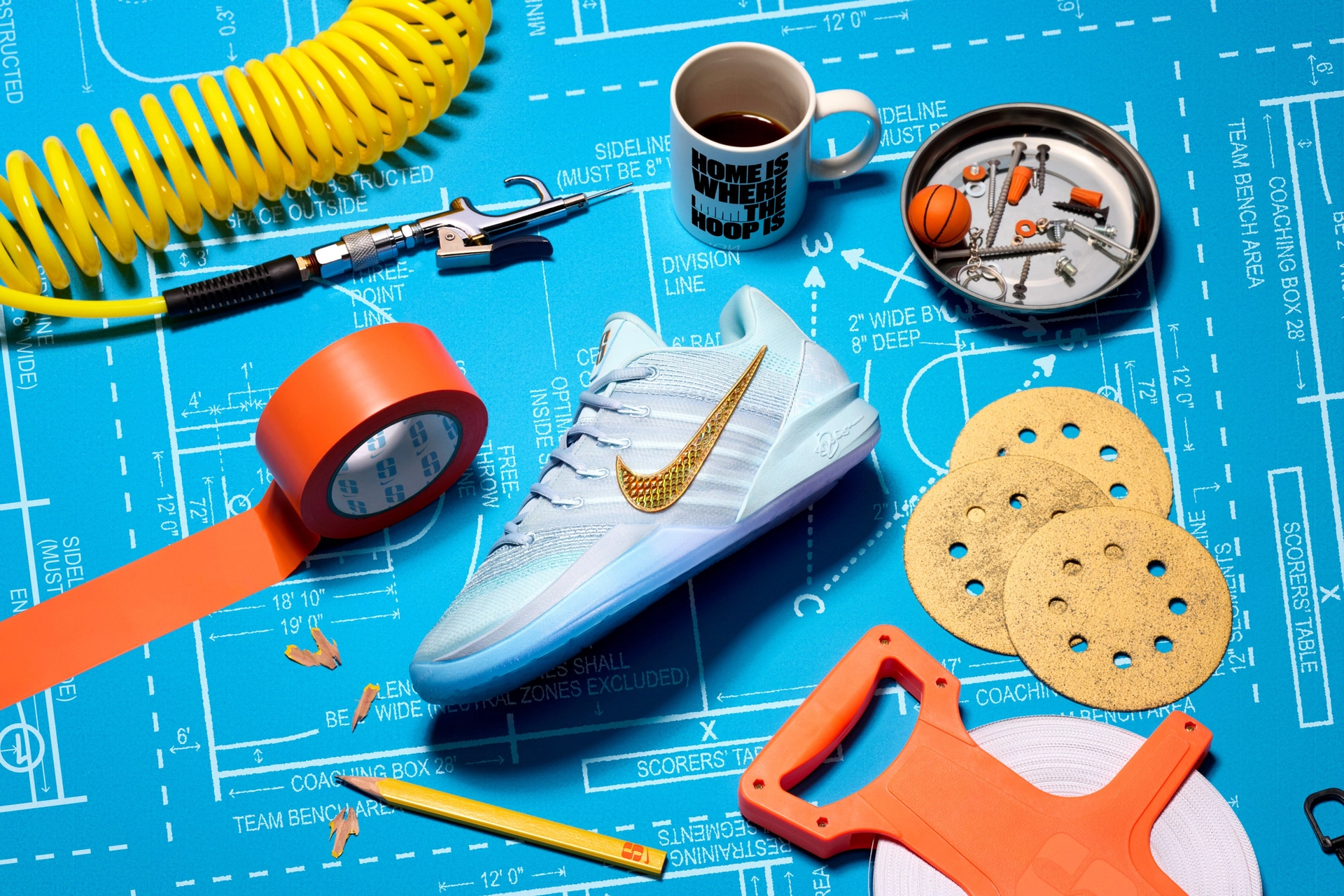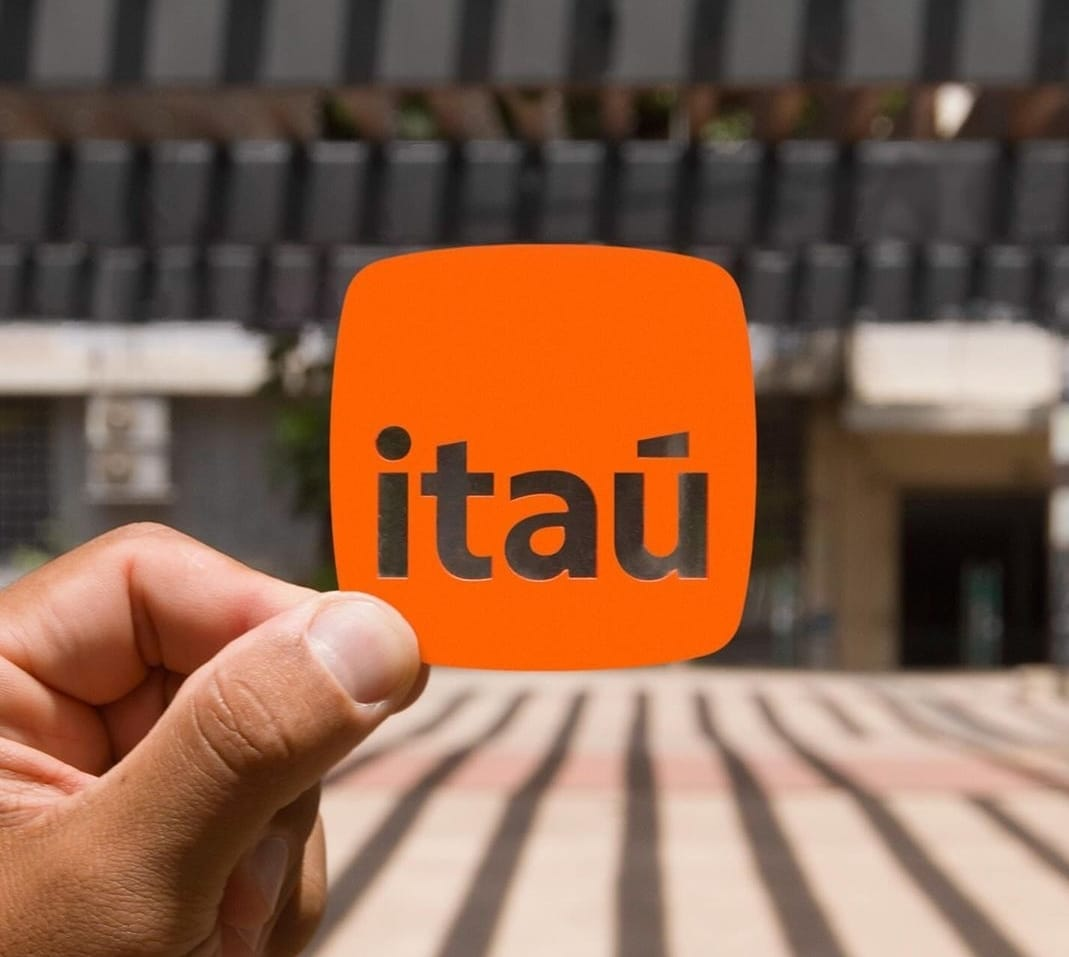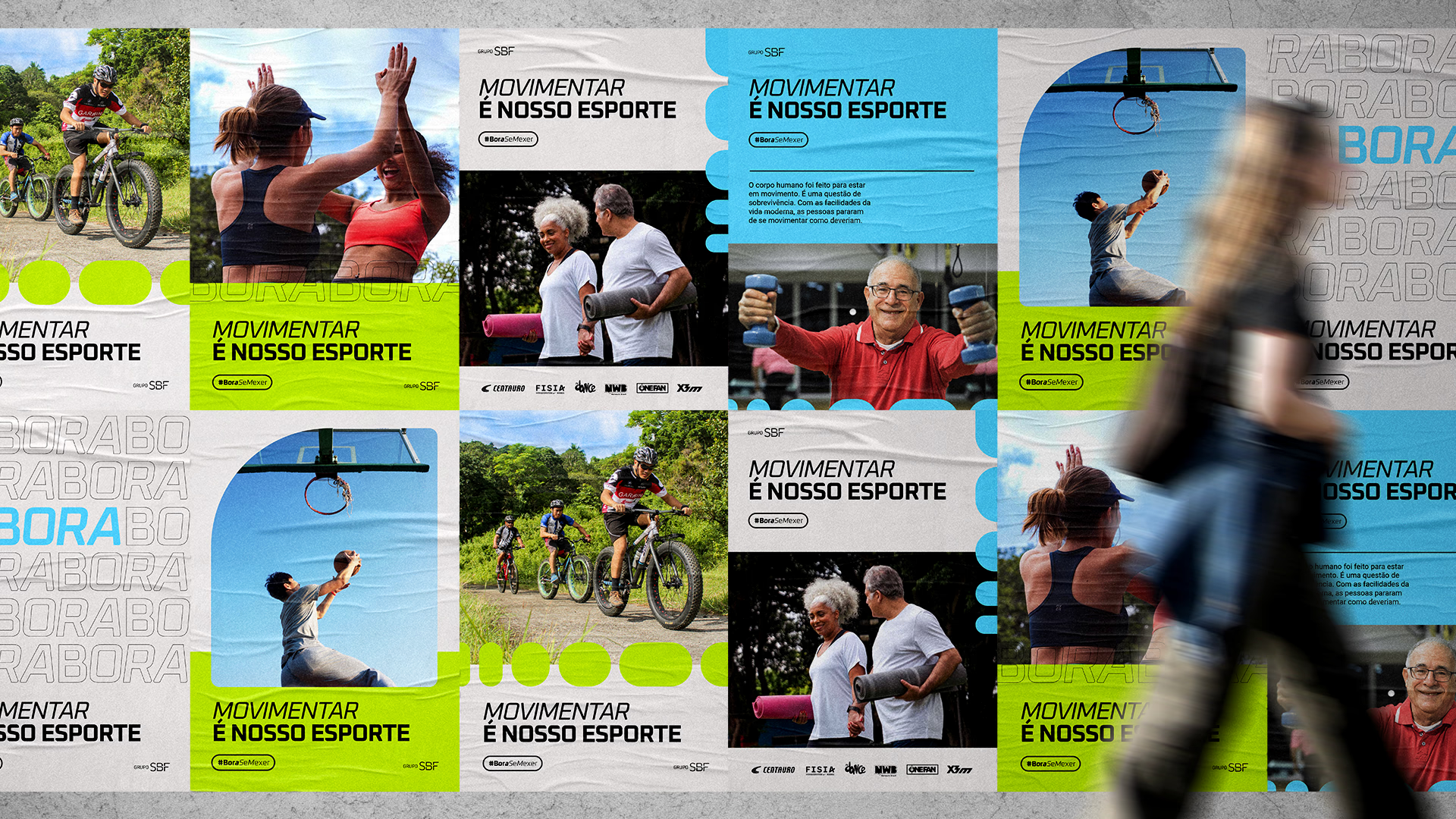
Riachuelo
Retail Self-Checkout MVP
How to give full autonomy and convenience to people when paying for a purchase in stores?
TL;DR
Implemented a self-checkout system in Riachuelo stores, using RFID technology to enable fast, autonomous payments. Resulted in reduced wait times, improved customer satisfaction, and scalable adoption across stores.
Context
Riachuelo, one of Brazil’s largest fashion retail chains, aimed to modernize its stores and offer a faster, more autonomous shopping experience.
The leadership wanted to implement self-checkout, but there was no clear understanding of the problems it would solve, opportunities it could bring, or technical feasibility.
Problem
The hypothesis of the problem that we had was: “our queue experience is terrible and generates a lot of dissatisfaction.” With that in mind, a good checkout experience would reduce queues and thereby contribute to customer happiness.
MY ROLE
Responsible for the product MVP definition and validation based on the customer's problem diagnosis that Riachuelo would solve based on research. I also facilitated one co-creation session and prototyped the first version of the defined solution. Then, as a lead, I directed the research with the team's researcher and the adaptations on the screen for the viability of the MVP.
Challenge
How might we give full autonomy and convenience to people when paying in stores?
Premises:
- RFID use in the product scan - technology should be implemented in 80% of the portfolio in the same year
- Prioritize card payments - in Brazil, 70% of people still prefer cash payment, but it raises fraud risk
- Riachuelo customers can't depend on the installation of any app nor should have any product offers during the self-checkout experience
Main Findings
#1 Self-checkout offers convenience, but queues are not a major issue.
- Average queue wait in 14 stores: under 2 minutes, total checkout: 3m50s.
- In-store visits and employee interviews revealed no complaints about waiting times.
- Cashiers handle multiple activities simultaneously (purchases, bills, cards), concentrating staff and customers in one spot.
- Store survey rated queue time 4.46/5, showing minimal dissatisfaction, though only purchasing customers responded.
- Global examples (Amazon, Ali Group) highlight convenience, but in Brazil, ~70% of customers still prefer cash, which is critical for adoption.
Decathlon Store at Paulista Avenue
#2 Self-checkout must provide real autonomy
- Requiring human support reduces autonomy; the goal is to free employees for higher-value interactions, not replace them.
- Desk research indicates that full automation can create aversion if perceived as impersonal robotization.
- Visits to 7 stores with self-checkout showed attendants were often present due to mistakes, proactive support, or ineffective design.
- Common issues observed in competitors:
- Payment machines angled poorly for scanning
- Low-quality touch screens affecting interaction
- Difficult-to-open plastic bags
- Confusing product tag removal
- Self-checkouts positioned too close to regular cashiers, obstructing the shopping path
Renner
Store
Renner
Store
C&A
Store
Decathlon Store at Paulista Avenue
OUR GOAL
Given that the queue isn't a problem and convenience can be a great value proposition for shoppers (due to rational or irrational reasons), it's likely that the main gain with the solution would be increasing the number of shoppers and not increase satisfaction with the queue experience.
Our expectation was that more people would buy than last year and since we didn't have data to compare, our challenge was to answer: will self-checkout increase the percentage of people who bought in the store compared to the number of people who entered the store?
Purchase journey today
Defined metrics:
- amount of people entering the store vs. amount of people entering the store and making a purchase
- amount of people who deviate from the common queue to go to the self-checkout
- self-checkout queue time must be less than 1min30sec
SOLUTION
Trends Considered using Trendwatching:
- Ambient Wellness: maximizing health and convenience with minimal effort, reflecting on physical and mental interactions in-store.
- A-Commerce: automated commerce enabling convenience and freeing humans for high-value tasks.
Design Premises:
Aligned with brand tone, store communication, ergonomics, and accessibility.
Approach:
Journey mapping with a proto-persona, identifying store pain points, prototyping the MVP, and testing.
MVP Features:
- RFID product reading (no scanning labels individually)
- Package size suggestion
- Button to call an attendant if help is needed
- Payment via gift, debit, or credit cards
- Installment payment options (e.g., Klarna-style)
Self-checkout concept
Validation
Because of the COVID-19 pandemic, we opted to do a mediated online test with 9 people. At this time, my team conducted the research, but I validated the questions and research goals.
We observed:
- general reaction on the concept, need on the concept and intention to use considering some tasks;
- probability of use in specific situations.
Targets:
- people shopping in physical stores and e-commerce
- people who shop only at physical stores
- people who shop online most of the time or always
- Most customers did not notice the gift package icon.
- Only one customer noticed the “ask for help” option and expected it would summon an employee.
- Typing information on a large screen (e.g., document number) caused discomfort for 5 of 9 participants.
- Users were uncertain about scanning, partly because the prototype was not on official devices.
- Potential barrier: product tags not fully demagnetized, which could trigger alarms, raising concerns especially among BIPOC shoppers.
Participant Quotes:
“The store needs packaging options, different sizes, simple gift packages for convenience.”
Leandro, 23
“I didn’t fully understand scanning items, but the overall idea is worth it.”
Rafael, 35
“It’s important to hide my ID; I don’t want anyone seeing it.”
Manuela, 22
“The clothes tag triggering alarms can be stressful, especially for Black customers.”
Leandro, 23
The SUS score was 76.4 and we made adjustments considering:
- the size of the help button
- the gift package option
- RFID was disregarded in this first version. The technology needed more tests to make sure it would work well.
Future tests in stores would be necessary to validate:
- findability and package choices value when in the final furniture
- easy scanning of items
- RFID security to demagnetize items
With adaptations aimed at product scanning and payment steps, MVP was launched at the concept store in São Paulo in December 2020.
TEAM
Marina Domingues - product designer and UX Lead
Marcus Bianchini - tribe leader
Celso Arruda - tribe leader
Mario Baumgartner - group product manager
Raphael Abe - product manager
Guilherme Gaspar - tech lead
Jefferson Tavares - IT developer
Vanessa Nonato - PoS product designer
Pedro Martins - researcher
Operations Team
Store Architecture Team
Next cases
SBF Group
Nike’s tone and voice guideline
Read project
Itaú
Green Products Strategy
Read project
SBF Group
DesignOps Strategy
Read project

Riachuelo
Retail Self-Checkout MVP
How to give full autonomy and convenience to people when paying for a purchase in stores?
TL;DR
Implemented a self-checkout system in Riachuelo stores, using RFID technology to enable fast, autonomous payments. Resulted in reduced wait times, improved customer satisfaction, and scalable adoption across stores.
Context
Riachuelo, one of Brazil’s largest fashion retail chains, aimed to modernize its stores and offer a faster, more autonomous shopping experience.
The leadership wanted to implement self-checkout, but there was no clear understanding of the problems it would solve, opportunities it could bring, or technical feasibility.
Problem
The hypothesis of the problem that we had was: “our queue experience is terrible and generates a lot of dissatisfaction.” With that in mind, a good checkout experience would reduce queues and thereby contribute to customer happiness.
MY ROLE
Responsible for the product MVP definition and validation based on the customer's problem diagnosis that Riachuelo would solve based on research. I also facilitated one co-creation session and prototyped the first version of the defined solution. Then, as a lead, I directed the research with the team's researcher and the adaptations on the screen for the viability of the MVP.
Challenge
How might we give full autonomy and convenience to people when paying in stores?
Premises:
- RFID use in the product scan - technology should be implemented in 80% of the portfolio in the same year
- Prioritize card payments - in Brazil, 70% of people still prefer cash payment, but it raises fraud risk
- Riachuelo customers can't depend on the installation of any app nor should have any product offers during the self-checkout experience
Main Findings
#1 Self-checkout offers convenience, but queues are not a major issue.
- Average queue wait in 14 stores: under 2 minutes, total checkout: 3m50s.
- In-store visits and employee interviews revealed no complaints about waiting times.
- Cashiers handle multiple activities simultaneously (purchases, bills, cards), concentrating staff and customers in one spot.
- Store survey rated queue time 4.46/5, showing minimal dissatisfaction, though only purchasing customers responded.
- Global examples (Amazon, Ali Group) highlight convenience, but in Brazil, ~70% of customers still prefer cash, which is critical for adoption.
Decathlon Store at Paulista Avenue
#2 Self-checkout must provide real autonomy
- Requiring human support reduces autonomy; the goal is to free employees for higher-value interactions, not replace them.
- Desk research indicates that full automation can create aversion if perceived as impersonal robotization.
- Visits to 7 stores with self-checkout showed attendants were often present due to mistakes, proactive support, or ineffective design.
- Common issues observed in competitors:
- Payment machines angled poorly for scanning
- Low-quality touch screens affecting interaction
- Difficult-to-open plastic bags
- Confusing product tag removal
- Self-checkouts positioned too close to regular cashiers, obstructing the shopping path
Renner Store
Renner Store
C&A Store
Decathlon Store at Paulista Avenue
OUR GOAL
Given that the queue isn't a problem and convenience can be a great value proposition for shoppers (due to rational or irrational reasons), it's likely that the main gain with the solution would be increasing the number of shoppers and not increase satisfaction with the queue experience.
Our expectation was that more people would buy than last year and since we didn't have data to compare, our challenge was to answer: will self-checkout increase the percentage of people who bought in the store compared to the number of people who entered the store?
Defined metrics:
- amount of people entering the store vs. amount of people entering the store and making a purchase
- amount of people who deviate from the common queue to go to the self-checkout
- self-checkout queue time must be less than 1min30sec
SOLUTION
Trends Considered using Trendwatching:
- Ambient Wellness: maximizing health and convenience with minimal effort, reflecting on physical and mental interactions in-store.
- A-Commerce: automated commerce enabling convenience and freeing humans for high-value tasks.
Design Premises:
Aligned with brand tone, store communication, ergonomics, and accessibility.
Approach:
Journey mapping with a proto-persona, identifying store pain points, prototyping the MVP, and testing.
MVP Features:
- RFID product reading (no scanning labels individually)
- Package size suggestion
- Button to call an attendant if help is needed
- Payment via gift, debit, or credit cards
- Installment payment options (e.g., Klarna-style)
Self-checkout concept
Validation
Because of the COVID-19 pandemic, we opted to do a mediated online test with 9 people. At this time, my team conducted the research, but I validated the questions and research goals.
We observed:
- general reaction on the concept, need on the concept and intention to use considering some tasks;
- probability of use in specific situations.
Targets:
- people shopping in physical stores and e-commerce
- people who shop only at physical stores
- people who shop online most of the time or always
- Most customers did not notice the gift package icon.
- Only one customer noticed the “ask for help” option and expected it would summon an employee.
- Typing information on a large screen (e.g., document number) caused discomfort for 5 of 9 participants.
- Users were uncertain about scanning, partly because the prototype was not on official devices.
- Potential barrier: product tags not fully demagnetized, which could trigger alarms, raising concerns especially among BIPOC shoppers.
Participant Quotes:
“The store needs packaging options, different sizes, simple gift packages for convenience.”
Leandro, 23
“I didn’t fully understand scanning items, but the overall idea is worth it.”
Rafael, 35
“It’s important to hide my ID; I don’t want anyone seeing it.”
Manuela, 22
“The clothes tag triggering alarms can be stressful, especially for Black customers.”
Leandro, 23
The SUS score was 76.4 and we made adjustments considering:
- the size of the help button
- the gift package option
- RFID was disregarded in this first version. The technology needed more tests to make sure it would work well.
Future tests in stores would be necessary to validate:
- findability and package choices value when in the final furniture
- easy scanning of items
- RFID security to demagnetize items
With adaptations aimed at product scanning and payment steps, MVP was launched at the concept store in São Paulo in December 2020.
TEAM
Marina Domingues - product designer and UX Lead
Marcus Bianchini - tribe leader
Celso Arruda - tribe leader
Mario Baumgartner - group product manager
Raphael Abe - product manager
Guilherme Gaspar - tech lead
Jefferson Tavares - IT developer
Vanessa Nonato - PoS product designer
Pedro Martins - researcher
Operations Team
Store Architecture Team
Next cases
SBF Group
Nike’s tone and voice guideline
Read project
Itaú
Green Products Strategy
Read project
SBF Group
DesignOps Strategy
Read project


